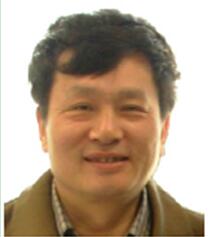
Professor LIN Yan received the B.E. degree from Beijing Institute of Aeronautics and Astronautics (Branch) in 1983, andthe M.S. and Ph.D. degrees from the Beijing University of Aeronautics and Astronautics (BUAA), Beijing, China, in 1988 and 1999, respectively. He is currently a Professorin the school of Automation, BUAA. His research interests include robust control and adaptive control.
Professor Lin Yan host and participated in a number of National Natural Science Foundation of China, Beijing natural science foundation, 863 Program, Doctoral Fund of Ministry of Education of China, and undertook a number of other research projects. He has published more than 40 SCI papers in top international journals, such as IEEE Transactions on Automatic Control, Automatica and other international publications. He directed two doctoral students to receive the academic award of Ministry of education. He leaded many PhD doctoral students to get BUAA Innovation Fund. He directed three foreign doctoral students to fetch Beijing Beihang University Students Union scholarships. He has long been engaged in teaching about Control theory and Control engineering. He served as the head of national-level quality courses( Principles of Automatic Control), for the undergraduate students, and state bilingual education model curriculum.
1. Lin Yan, Liu Hsu, Ramon R. Costa, Fernando Lizarralde, A variablestructure model reference robust control without a prior knowledge of high frequency gain sign, Automatica, 2008, 44:1036-1044.
2. Lin Yan, Liu Hsu, Sun Xiuxia, A variable structure MRAC withexpected transient and steady-stateperformance, Automatica, 2006, 42:1036-1044.
3. Zhang Xu, Lin Yan, Adaptive control of nonlinear time-delaysystemswith application to a two-stage chemical reactor,Chenliang Wang, Changyun Wen, and Yan Lin
4. Zhang Xu, Lin Yan, Adaptive output feedback control for a class oflarge-scale nonlinear time-delay systems, Automatica, 2015, 52: 87-94.
5. Li Guangqi, Lin Yan, Robust output feedback stabilization ofnonlinear systems with low-order and high-order nonlinearities,InternationalJournal of Robust and Nonlinear Control, 2016, 26(9): 1919-1943.
6. Li Guangqi, Lin Yan, Xu Zhang, Global output feedback stabilization for a class of nonlinear systems with quantized input and output,International Journal of Robust and Nonlinear Control, available online,DOI:10.1002/rnc.3565.
7. Wang Chenliang,Lin, Yan, Multivariable Adaptive BacksteppingControl: A Norm Estimation Approach, IEEE Transactions on AutomaticControl, 2012, 57(4):989-995.
8. Chenliang Wang, Yan Lin, Adaptive dynamic surface control forlinear multivariable systems, Automatica, 2010, 46: 1703-1711.
9. Waseem Aslam Butt, Lin Yan, and Amezquita S. Kendrick, Adaptivedynamicsurfacecontrol of a hypersonic flight vehicle with improved tracking, Asian Journal of Control, 2013, 15(2):594-605.
10. Xiuyu Zhang, Yan Lin, Jianqin Mao, A robust adaptive dynamic surface control for a class of nonlinear systems with unknown Prandtl–Ishilinskii hysteresis, International Journal of Robust and Nonlinear Control, 2011, 21(13): 1541-1561.
11. Chenliang Wang, Changyun Wen, and Yan Lin , Adaptive Actuator Failure Compensation for a Class of Nonlinear Systems With Unknown Control Direction, IEEE Transactions on Automatic Control, available online, DOI 10.1109/TAC.2016.2524202.
12. Lin Tie, Kai-Yuan Cai, Yan Lin, On controllability of discrete-time bilinear systems, Journal of the Franklin Institute, 2011, 348(5): 933-940.
13. Ye Liu, Yan Lin, Global adaptive output feedback tracking for a class of non-linear systems with unknown backlash-like hysteresis, IET Control Theory & Applications , 2014, 8(11): 927-936.
14. Xiaowei Yu, Yan Lin, Adaptive Backstepping Quantized Control for a Class of Nonlinear Systems, IEEE Transactions on Automatic Control, available online, DOI 10.1109/TAC.2016.2570140.
15. Shanwei Su, Yan Lin, Robust output tracking control of a class of non-minimum phase systems and application to VTOL aircraft, International Journal of Control, 2011, 84(11): 1858-1872.



